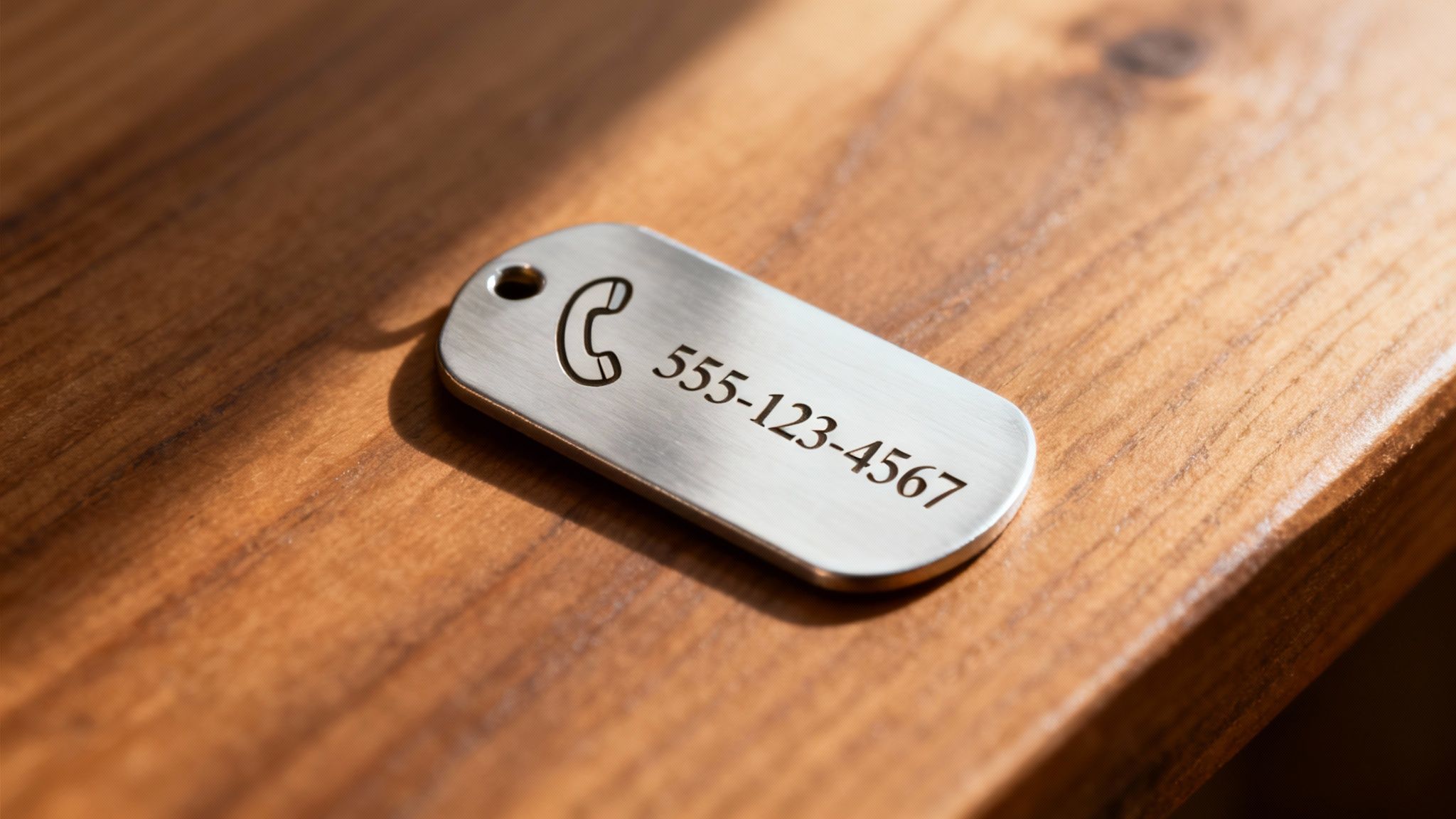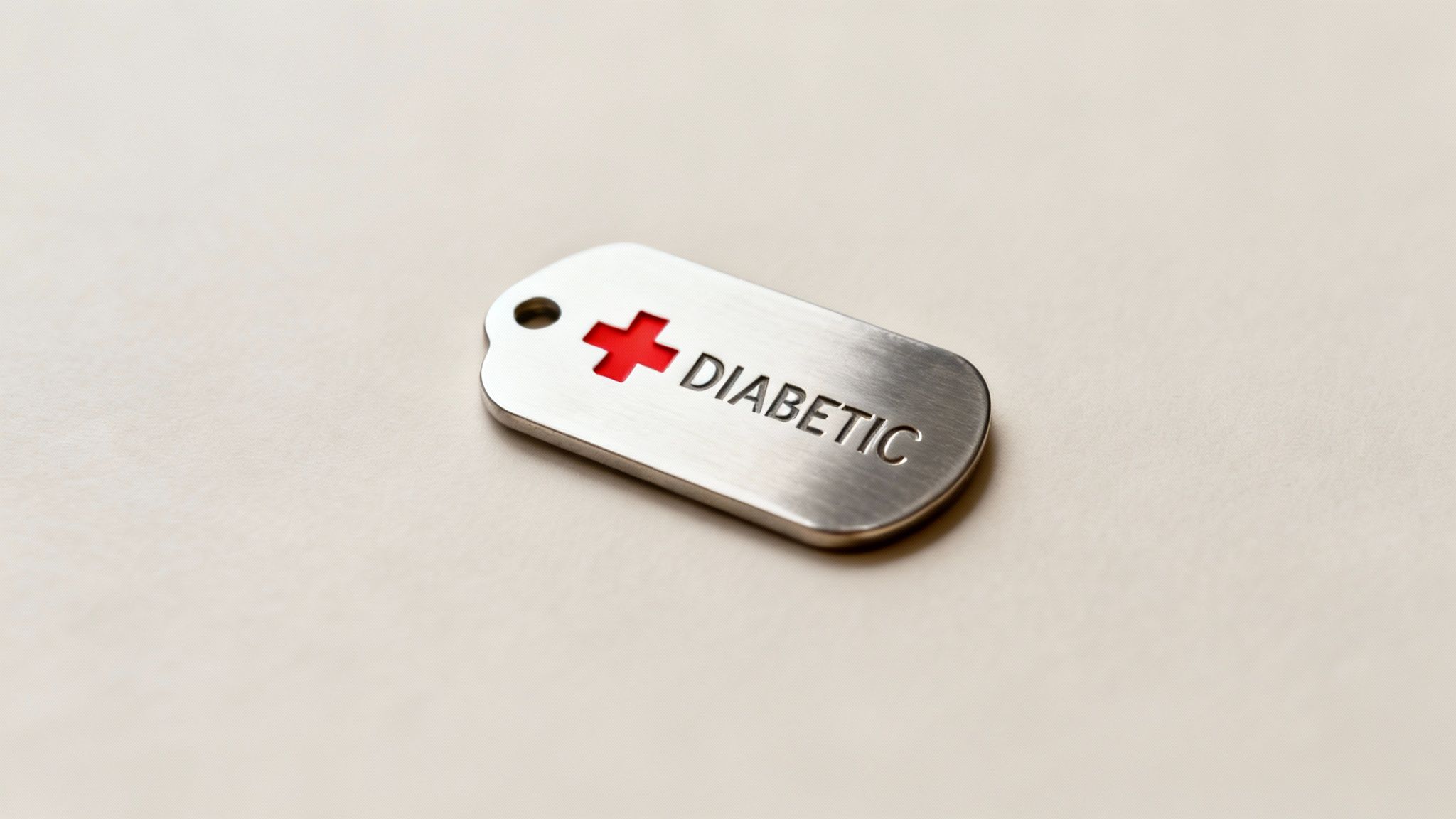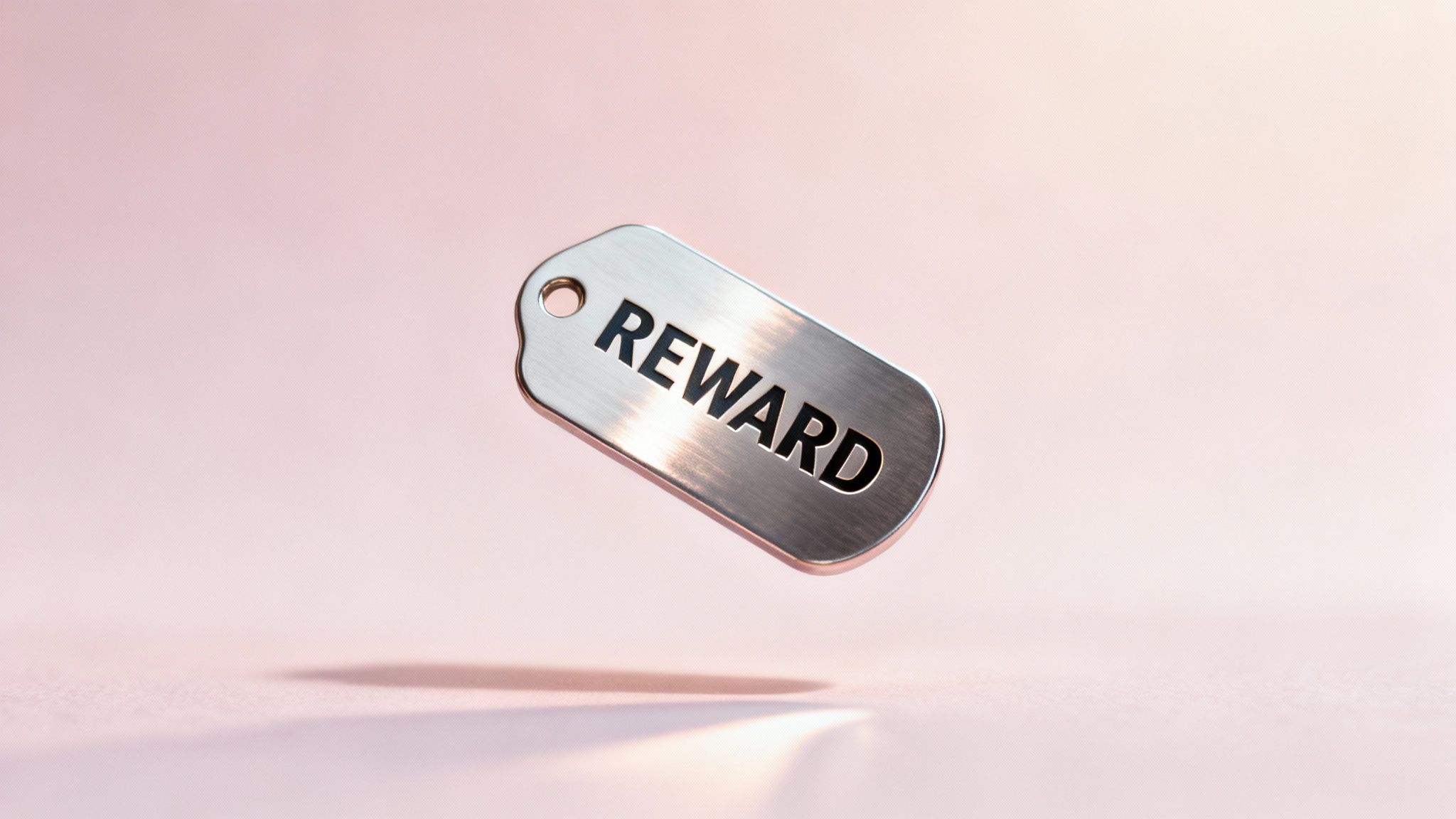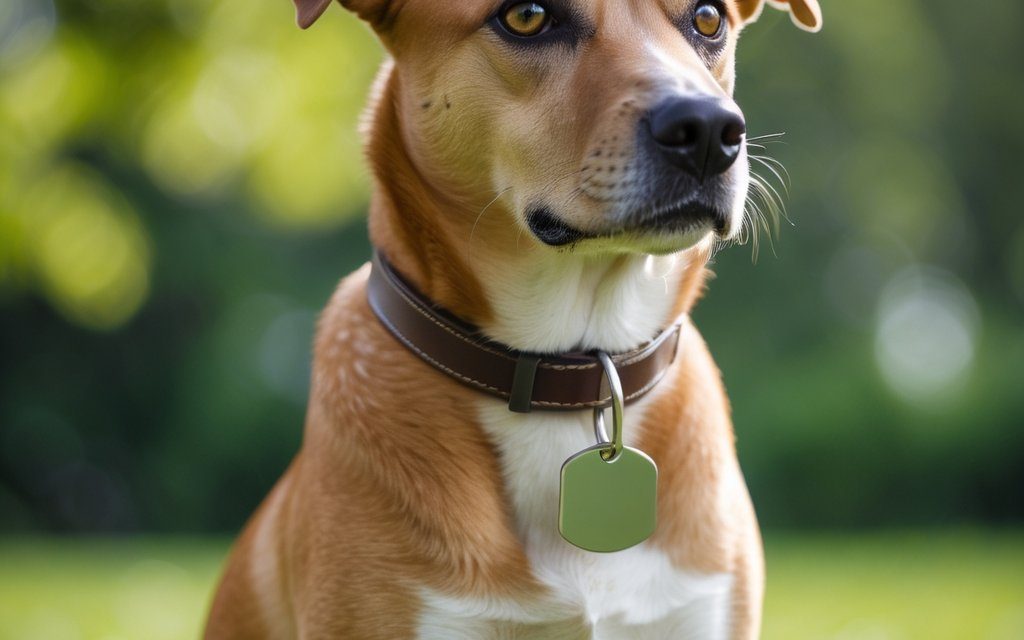That tiny metal tag jingling on your dog’s collar is more than just a bit of bling; it’s a silent guardian, a beacon that can guide them home if you’re ever separated. We know how much your furry family member means to you, and the thought of them getting lost is something no pet parent wants to dwell on. But being prepared is one of the best ways we can show our love and ensure their safety.
Deciding what to put on dog tags can feel surprisingly tricky. What’s absolutely essential? What might be a privacy risk? What specific information will give you the best possible chance of a happy, speedy reunion? This is a vital piece of your dog’s safety kit, and getting it right offers immense peace of mind.
Together, we’re going to walk through the seven most crucial pieces of information to consider for that tag. We’ll explore the must-haves, the helpful extras, and provide actionable tips to help you create the perfect, customised ID. This guide is designed to remove the guesswork, ensuring your dog’s first line of defence is as effective as it can be for every walk and adventure you share.
1. Dog’s Name
Your dog’s name is the first and most personal piece of information to include on their tag. It’s more than just an identifier; it’s a crucial tool for a finder to connect with your lost pet. Hearing their own name can significantly soothe a frightened or disorientated dog, making them more approachable and easier to manage in a stressful situation. This simple detail transforms a scary encounter with a stranger into a more personal and calming interaction.
When we’re deciding what to put on dog tags, the name is the foundational element that every other piece of information builds upon. It provides an immediate, humane way for someone to address your furry friend, fostering a sense of familiarity and trust.
Why Your Dog’s Name is Essential
A name on a tag serves a powerful psychological purpose. It signals to the finder that this is a loved family member, not a stray, which encourages them to take action and help. For your dog, hearing a familiar word can reduce anxiety, making them less likely to run away from the very person trying to help them. We know this small detail can be the difference between a swift reunion and a prolonged, traumatic experience for your pet.
Practical Tips for Engraving Your Dog’s Name
Getting the name right on the tag is key. Here are some actionable tips to ensure it’s as effective as possible:
- Use the Name They Know: Engrave the name your dog actually responds to. If their registered name is “Sir Reginald Fluffington” but you call them “Reggie,” use “Reggie.” This ensures the finder can get your dog’s attention effectively.
- Prioritise Legibility: Choose a simple, clear font. The name should be the most prominent text on the tag, often placed on the front. Ensure the engraving is deep enough to withstand wear and tear from daily adventures around Sheffield’s parks.
- Keep It Simple: If space is tight, a first name is usually sufficient. For example, “Buddy” is clearer and more immediate than “Buddy Boy Smith.”
By making your dog’s name the centrepiece of their ID tag, you provide a powerful tool for their safe return, turning a potential rescuer from a stranger into a friend.
2. Owner’s Phone Number
After your dog’s name, your phone number is the single most critical piece of information to include on their tag. It offers the quickest and most direct line of communication for a finder, turning a stressful situation into a simple phone call. This immediate contact method is vital for a swift and safe reunion, bypassing potential delays associated with other forms of identification.

When considering what to put on dog tags, a clear and current phone number is non-negotiable. It empowers the person who finds your dog to get in touch with you instantly, giving you immense peace of mind and significantly increasing the chances of your pet returning home quickly.
Why Your Phone Number is Essential
Including your phone number removes barriers and makes it incredibly easy for someone to do the right thing. A finder won’t need to take your dog to a vet or a shelter to be scanned for a microchip; they can simply pull out their phone and call you. This direct contact drastically reduces the time your dog is lost, minimising their stress and potential exposure to dangers like traffic or unfamiliar environments. It is the most efficient tool for a rapid reunion.
Practical Tips for Engraving Your Phone Number
Making your contact details effective requires a bit of thought. Here are some actionable tips to ensure your phone number serves its purpose:
- Provide Two Numbers: If space allows, engrave two phone numbers. This creates a valuable backup if you miss a call on your primary line. For example: “Call: 07700 900123 / Alt: 07700 900456”.
- Prioritise Mobile Numbers: We recommend using mobile numbers over landlines. You are more likely to have your mobile with you, whether you’re at work, out shopping, or walking in one of Sheffield’s lovely parks like Graves Park.
- Check Your Voicemail: Make sure your voicemail is set up and your inbox is not full. A finder may leave a message if you can’t answer, so let’s make sure they have the option to do so.
- Include “Call/Text”: Adding the word “Text” or “Call/Text” next to your number lets the finder know they have multiple ways to reach you, which can be helpful in areas with poor signal.
3. Owner’s Address
Including your home address on a dog tag is a traditional choice, offering a direct route for a kind stranger to bring your lost pet straight back to your doorstep. This can be especially helpful if your dog is found very close to home, or if the finder is unable to reach you by phone. However, in today’s world, we understand that privacy and security are valid concerns, making the decision to include a full address more nuanced.

When considering what to put on dog tags, your address provides a physical location for your dog’s safe return. This can be a great backup if other contact methods fail, but it’s crucial to weigh the benefits against the potential security implications for your family and home.
Why Your Owner’s Address Can Be Useful
An address offers a simple, immediate solution for someone who finds your dog nearby. A neighbour, for instance, could walk your dog home in minutes without needing to make a call. It also provides a fallback if your phone battery has died or you’re in an area with no reception, ensuring there’s still a way to reunite you with your pet. For some of us, especially in tight-knit communities around Sheffield, this information fosters a sense of trust and encourages direct, helpful action.
Practical Tips for Engraving Your Address
If you choose to include location information, how you present it matters. Here are some actionable tips to balance safety and security:
- Consider a Partial Address: Instead of your full street number and name, you could engrave just your house number and postcode, or just your street name and town. For example: “123, S10” or “Oak Hill Road, Sheffield.”
- Prioritise Contact Numbers: If space on the tag is limited, phone numbers are more crucial than an address. An address should be considered secondary information after you have included at least two reliable contact numbers.
- Use an Alternative Address: If you have a P.O. box or a trusted work address, you could use that instead to protect your home’s privacy while still providing a point of contact.
- Keep It Updated: This is so important. An old address is not only useless but could send a helpful stranger and your dog on a confusing and stressful journey. Always update the tag immediately after you move.
4. Medical Information and Conditions
Including critical medical information on your dog’s tag can be a literal lifesaver if they become lost. For a dog with a serious health condition, this information provides a finder or emergency vet with the immediate knowledge needed to offer proper care, preventing a health crisis. It’s a vital detail that transforms a standard ID tag into an essential medical alert tool.

When deciding what to put on dog tags, prioritising urgent medical needs is non-negotiable for our at-risk pets. This ensures that even before you are contacted, your dog’s fundamental health requirements are understood and can be addressed by the person who finds them.
Why Medical Information is Essential
A tag with a medical alert instantly communicates the urgency of the situation. It lets a finder know that your pet isn’t just lost—they’re vulnerable and may need specialised attention. This can influence how they are handled, what they are fed, and how quickly professional help is sought. For conditions like diabetes or epilepsy, this information can prevent a tragedy while you are being located. Knowing how to handle these emergencies is crucial, and a tag provides the first line of defence.
Practical Tips for Engraving Medical Information
Clarity and brevity are paramount when adding health details to a tag. Your goal is to provide actionable information at a glance.
- Be Concise and Critical: Only list life-threatening or urgent conditions. For example, “DIABETIC – NEEDS INSULIN” is more effective than a general “Has health issues.” Other crucial examples include “SEIZURES,” “SEVERE ALLERGY,” or “BLIND/DEAF.”
- Use Simple Language: Let’s avoid complex medical jargon. “HEART CONDITION” is clearer to a layperson than “Cardiomyopathy.” The aim is for anyone, not just a vet, to understand the immediate risk.
- Prioritise Placement: If space is limited, you could engrave “NEEDS MEDS” on the front and provide specific details on the back. This ensures the most critical alert is seen first.
- Consider a Separate Tag: If your dog has multiple serious conditions, a dedicated red medical alert tag can be added to their collar alongside their main ID tag. This makes the medical information impossible to miss.
5. Microchip Information
Including a note about your dog’s microchip on their tag is a powerful, secondary layer of security. It immediately informs a finder that your pet has a permanent, scannable form of identification, which encourages them to take the dog to a vet or shelter for a quick and definitive owner lookup. This simple addition acts as a crucial backup if your tag is damaged or your phone number is unreadable.
When considering what to put on dog tags, a “microchipped” notice provides reassurance and a clear next step for anyone who finds your lost companion. It signals that you are a responsible owner and that a reliable method for reunion is readily available.
Why Microchip Information is Essential
A microchip is useless if the finder doesn’t know it’s there. Adding this information to the tag turns a passive implant into an active recovery tool. It prompts immediate action from the finder, guiding them to a professional who can access the chip’s data. This detail can drastically speed up the reunion process, especially if you are unreachable at the phone numbers provided. It confirms your dog is a cherished family member, not a stray, and provides an official, verifiable way to confirm your ownership.
Practical Tips for Engraving Microchip Information
You don’t need to engrave the long microchip number itself. A simple alert is far more effective. Here are some actionable tips:
- Use a Clear Indicator: A simple and bold “MICROCHIPPED” or “I AM CHIPPED” is highly effective and easy to read.
- Save Space with Abbreviations: If tag space is limited, use “μCHIP” or a small microchip symbol (if your engraver offers it) to convey the message concisely.
- Keep Your Registration Current: This is the most critical step. A chip linked to an old address or phone number is of no use. Let’s always remember to update our details with the registry service whenever we move or change our number.
- Verify at Vet Visits: Ask your vet to scan the chip during your dog’s annual check-up to ensure it’s still working correctly and readable. This quick check can provide immense peace of mind.
6. “Reward” or “I’m Lost” Message
Adding a short, urgent message to your dog’s tag can be a powerful motivator for a finder. Phrases like “I’m Lost” or “Reward” create an immediate sense of urgency and provide a clear call to action, encouraging someone to help your pet get home safely. This small addition can significantly influence a person’s decision to get involved, especially if they are unsure whether your dog has simply wandered off or is genuinely lost.
When we’re thinking about what to put on dog tags, this element adds a layer of psychological incentive. It communicates that this isn’t just a pet, but a desperately missed family member, prompting a finder to act swiftly and compassionately.
Why This Message is Essential
A direct message appeals to a finder’s emotions and sense of duty. An “I’m Lost” message fosters empathy, while a “Reward” offer provides a tangible incentive for their time and effort. In a busy city like Sheffield, where people might hesitate to intervene, these phrases can be the deciding factor that turns a passer-by into a rescuer. It removes ambiguity and confirms that your dog needs our immediate help.
This simple text can transform a moment of hesitation into decisive, helpful action. It signals that you are actively and anxiously searching, encouraging the finder to make that crucial phone call.
Practical Tips for Engraving a Message
To make your message as effective as possible, clarity and brevity are key. Here are some tips we recommend:
- Be Direct and Concise: Space on a tag is limited. Use short, impactful phrases like “I’M LOST,” “REWARD,” or “HELP ME GET HOME.”
- Prioritise Critical Information: Ensure the message does not overshadow your name and phone number. It should complement, not replace, essential contact details.
- Consider Emotional vs. Financial Appeals: A message like “My family misses me” can be just as powerful as a monetary reward. Think about what might resonate most with people in your local community.
- Keep Rewards Vague: If you choose to offer a reward, simply engraving “REWARD” is often more effective than specifying an amount. This avoids setting expectations while still providing a strong incentive.
By including a carefully chosen message, you give your lost dog a voice, clearly communicating their situation and making it easier for a kind stranger to bring them back to you.
7. Secondary Emergency Contact
Including a secondary emergency contact number on your dog’s tag provides a crucial backup if you’re unreachable. It acts as a safety net, ensuring that someone trusted can be contacted to help your lost pet, even when your primary phone is off, out of service, or you’re in a meeting. This could be a family member, a reliable friend, a neighbour, or even your vet.
When we’re thinking about what to put on dog tags, this redundancy is so important. For those of us who travel, work in areas with poor reception, or simply have unpredictable schedules, a secondary contact dramatically increases the chances of a swift and safe reunion. It gives the finder more than one route to get your dog back home.
Why a Secondary Contact is Essential
A single contact number creates a single point of failure. If you miss that one important call, your dog’s reunion could be delayed for hours, or even days. A secondary contact mitigates this risk entirely. It signals to the finder that you have a support network in place for your pet, encouraging them to persist in their efforts to help.
This backup is especially important in an emergency. If your dog is found injured and needs immediate attention, having another person who can authorise veterinary care or rush to the scene is invaluable. It’s an extra layer of protection that gives us immense peace of mind.
Practical Tips for Engraving a Secondary Contact
Adding a second number needs to be done clearly to avoid confusion. Here are some actionable tips:
- Label It Clearly: Use a prefix to distinguish the numbers. Simple labels like “Alt:”, “Backup:”, or “If no answer:” make it obvious to the finder which number to try next. An example could be: “Alt: 07700 900123”.
- Get Permission First: Always ask for consent before engraving someone’s number on your dog’s tag. Let’s make sure they understand the responsibility and are willing to help in an emergency.
- Choose Someone Local and Reliable: A contact who lives nearby can often collect your dog faster. Select someone you trust to answer their phone and act calmly and decisively.
- Consider Your Vet: Listing your veterinarian’s practice as a backup is a great option. They have all your dog’s medical records and can offer immediate professional advice to the finder.
Having a well-thought-out plan, including reliable contacts, is a cornerstone of responsible pet ownership. To make sure your key details are always up-to-date with your trusted pet care providers, you can learn more about our K9 Time contacts.
Essential Info Comparison for Dog Tags
| Item | Implementation Complexity 🔄 | Resource Requirements ⚡ | Expected Outcomes 📊 | Ideal Use Cases 💡 | Key Advantages ⭐ |
|---|---|---|---|---|---|
| Dog’s Name | Low – simple engraving | Minimal – small space on tag | Immediate pet identification, helps calm lost dog | All dogs, foundational ID on tags | Creates connection with finder, minimal tag space |
| Owner’s Phone Number | Medium – requires accurate contact info | Moderate – takes tag space | Quick direct contact, fastest reunion method | Essential for all, especially high-lost-risk pets | Immediate two-way communication, no internet needed |
| Owner’s Address | Medium – deciding on privacy vs utility | Moderate – takes valuable space | Allows physical return, useful locally | Dogs mostly staying near home or required by local laws | Enables neighbors to return dog directly, backup contact method |
| Medical Information & Conditions | Medium – concise critical info required | Moderate – limited tag space | Life-saving alerts for emergencies | Dogs with urgent medical needs | Prevents harmful handling, emergency care guidance |
| Microchip Information | Low to Medium – simple indicator on tag | Minimal to moderate – space for registry | Backup ID method if tag fails | All dogs with microchips, added layer of identification | Encourages scanning, proves ownership |
| “Reward” or “I’m Lost” Message | Low – short motivational message | Minimal – requires tag space | Encourages finder to act, speeds return | High risk of lost situations requiring extra motivation | Adds emotional/monetary incentive, clarifies lost status |
| Secondary Emergency Contact | Medium – coordination needed | Moderate – takes tag space | Higher chance of contact if primary unreachable | Traveling owners or unpredictable schedules | Increases contact options, local backup assistance |
A Small Tag for a Big Piece of Mind
Crafting the perfect dog tag is more than just a simple task; it’s a profound act of love and responsibility. As we’ve explored, that tiny piece of metal attached to your dog’s collar is their first line of defence if they ever wander off. It’s a direct, immediate line back to you, offering a quicker and often less stressful reunion than relying on a microchip scan alone. Getting the details right on what to put on dog tags transforms this simple accessory into a powerful safety tool, ensuring anyone who finds your companion can help them get home safely and swiftly.
We’ve covered the essential hierarchy of information, from your primary phone number and your dog’s name to critical medical alerts that could save their life. We also highlighted the importance of adding that a microchip is present, which encourages a finder to seek a vet or shelter for a definitive identity check. This layered approach creates a robust safety net, covering multiple scenarios and providing crucial details to a Good Samaritan in a stressful situation. The key is to find the perfect balance: providing enough information to be effective without cluttering the tag and making it difficult to read.
Your Actionable Checklist for a Perfect Tag
Think of your dog’s tag as a living document. It needs to be accurate to be effective. Here are your final takeaways to put into action today:
- Review and Refresh: Take a moment to look at your dog’s current tag. Is the text still legible? Is your phone number correct? If you’ve moved or changed your number recently, updating their tag should be at the top of your to-do list.
- Prioritise Clarity: Let’s remember the golden rule: legibility is paramount. Choose a clear, simple font and opt for deep engraving over surface-level printing, which can wear away over time. The most vital information, like your phone number, should be the most prominent.
- Secure the Tag: A tag is useless if it falls off. Invest in a sturdy split ring or S-hook to attach the tag securely to the D-ring of your dog’s collar or harness. Check it periodically to ensure it hasn’t weakened or opened.
Ultimately, a well-organised dog tag is a testament to your proactive care as a pet owner. It’s a two-minute check that provides an invaluable sense of security, allowing you and your furry friend to enjoy your adventures together with greater confidence. This small, thoughtful detail speaks volumes about the safety and well-being of your beloved companion, ensuring that if the unexpected happens, you’ve given them the best possible chance of a speedy return to your loving arms.
Here at K9 Time, we understand that your dog’s safety is your number one priority, whether they’re at home or out on a walk. We provide professional, reliable dog walking and pet care services for owners across Sheffield, including S7, S8, S10, S11, and S17, so you can have complete peace of mind. To learn more about how we can support you and your best friend, visit us at K9 Time.





